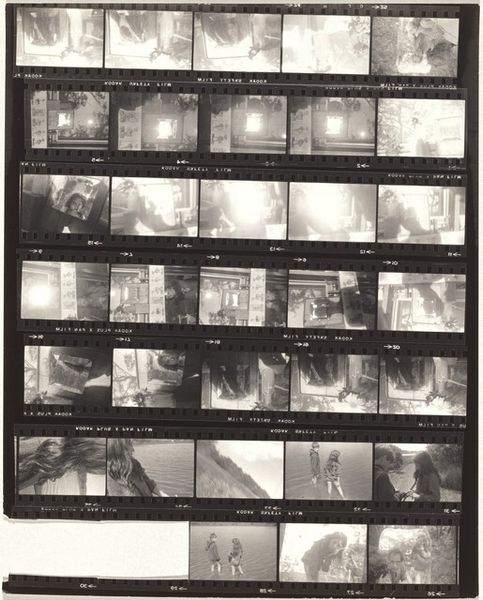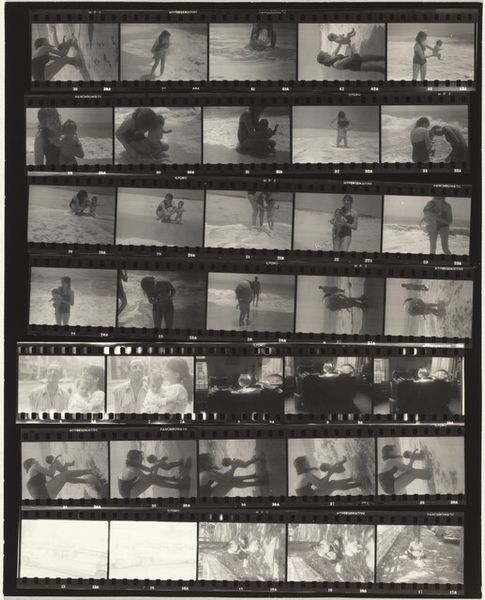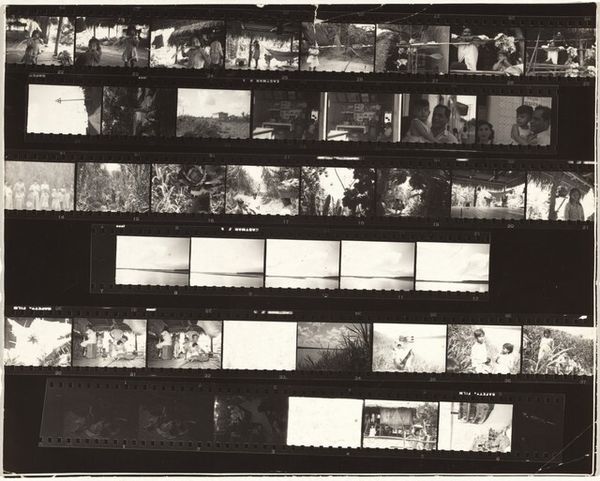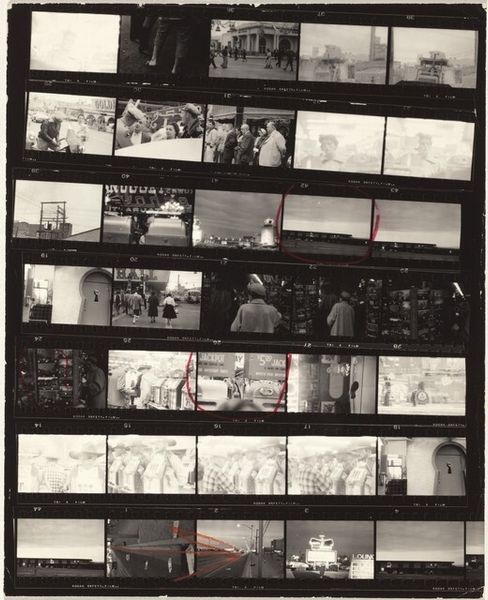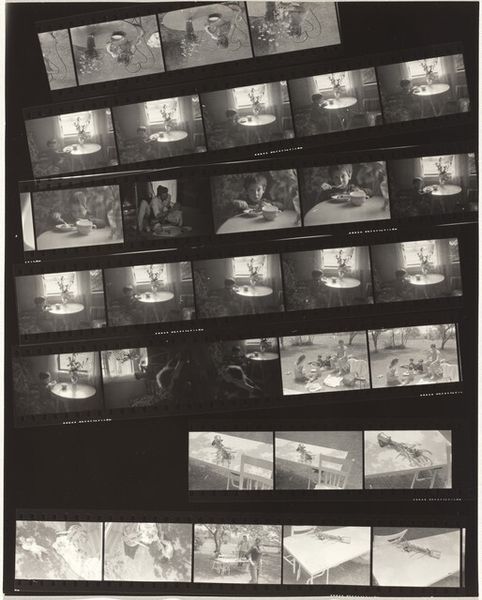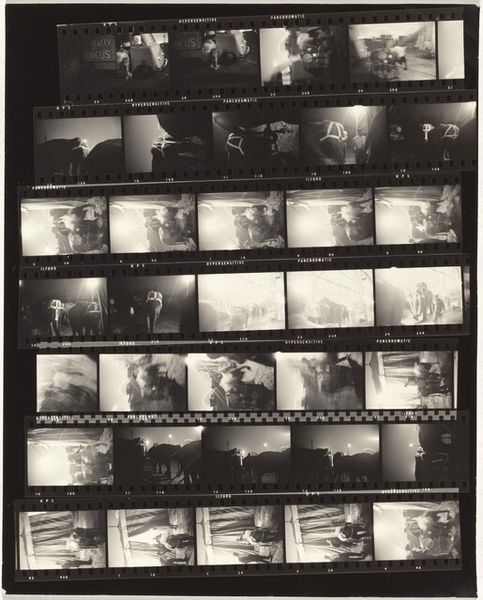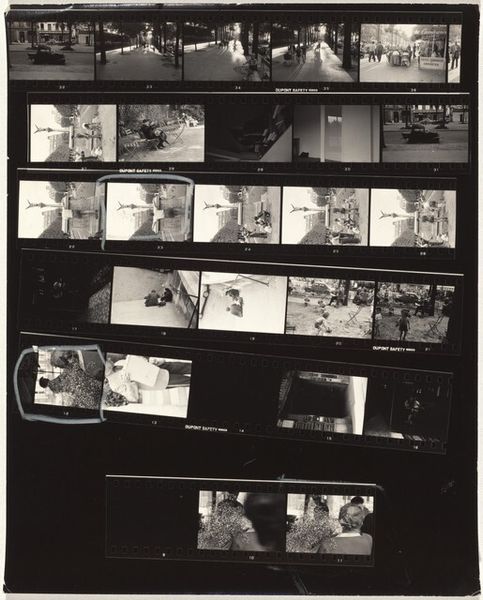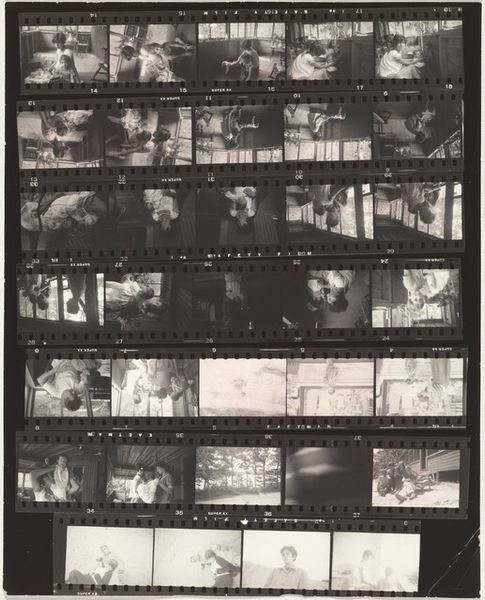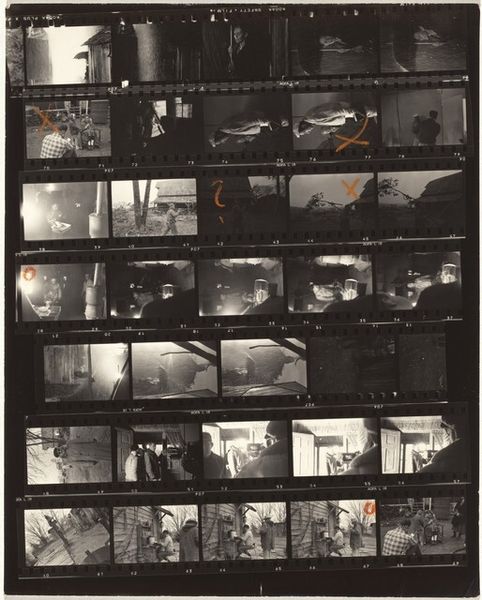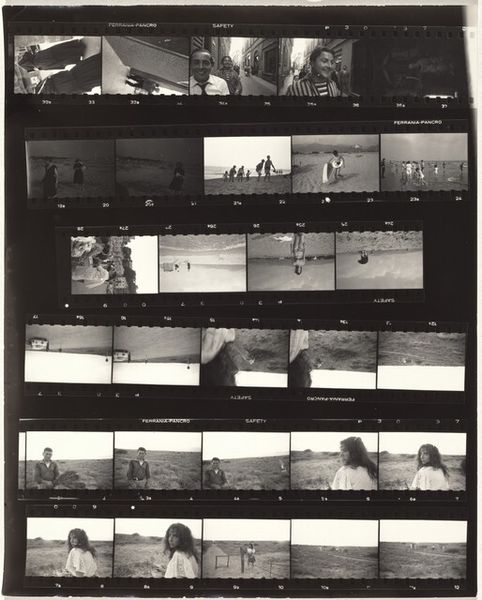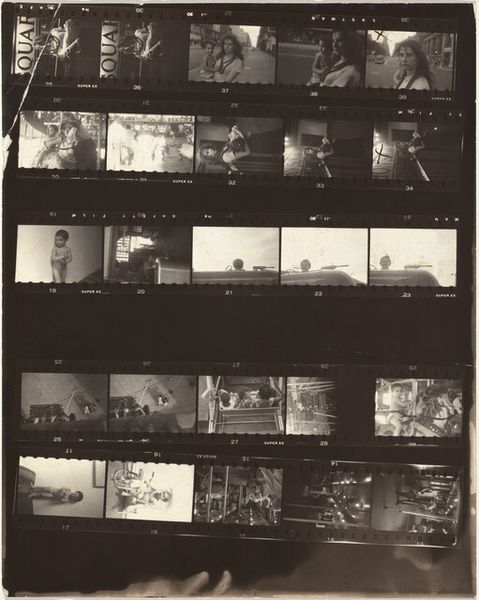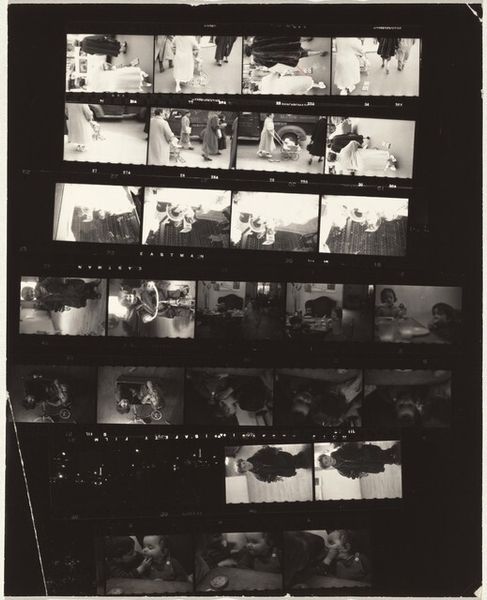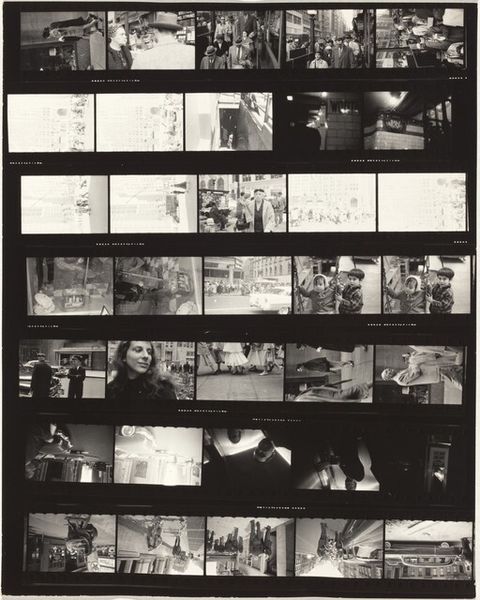
photography
#
portrait
#
still-life-photography
#
black and white photography
#
landscape
#
warm monochrome
#
archive photography
#
photography
#
monochrome photography
#
monochrome
Dimensions: overall: 25.2 x 20.1 cm (9 15/16 x 7 15/16 in.)
Copyright: National Gallery of Art: CC0 1.0
Editor: We're looking at Robert Frank's "Family--Wellfleet 2," likely from 1962, a photographic work presented as a contact sheet. The sequence of images creates almost a fragmented narrative. What strikes me is how the harsh blacks and whites lend a documentary feel, yet the arrangement feels almost poetic. What do you see in this piece? Curator: Indeed. Let us observe how Frank employs the inherent properties of the medium to articulate his vision. Notice the linearity enforced by the contact sheet format, a grid that dictates our reading of the images. The stark tonal contrasts, a hallmark of Frank's style, serve to heighten the emotional tenor, lending the mundane a sense of gravitas. What do you make of the varying focus throughout the sequence? Editor: I hadn't considered that. Some shots are crisp, while others are soft, almost dreamlike. Curator: Precisely. It disrupts a straightforward reading, inviting subjective interpretation. It becomes less about recording and more about evoking. Consider also the repetition of motifs—the figures, the landscape. Does this recurrence create a sense of rhythm or perhaps underscore a theme? Editor: It feels like he’s hinting at something. This repetition builds a sense of familiarity but also mystery. Curator: An excellent point. This is Frank challenging the viewer to engage beyond the surface, urging us to consider not just what is depicted, but how. A masterclass of photographic syntax, wouldn’t you agree? Editor: I do. Viewing it through the lens of formal qualities really opens up how deliberate each choice was, even if seemingly casual. Curator: It transforms our appreciation from simple observation to critical engagement. The formal elements are, ultimately, the substance.
Comments
No comments
Be the first to comment and join the conversation on the ultimate creative platform.
